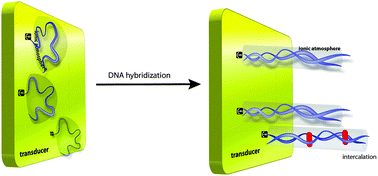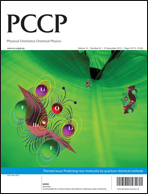Understanding properties of electrified interfaces as a prerequisite for label-free DNA hybridization detection
Abstract
Label-free electrochemical detection of DNA hybridization with high selectivity and sensitivity is only achievable if the properties of DNA at an electrified interface are understood in depth. After a short summary of concepts of electrochemical DNA detection as well as initial attempts towards label-free DNA assays the review discusses the physico-chemical properties and differences between single-stranded and double-stranded DNA immobilized at electrode surfaces in the light of their persistence lengths, structural conformation, impact of the charge screening by ion condensation and the electric field generated upon polarization of the electrode. Electrochemical impedance spectroscopy as a tool for label-free elucidation of DNA hybridization is reviewed and the necessity for an in-depth understanding of the interfacial properties is highlighted. Our major aim is to demonstrate the advantageous application of specifically designed intercalating compounds for the design of label-free detection of DNA hybridization.


 Please wait while we load your content...
Please wait while we load your content...